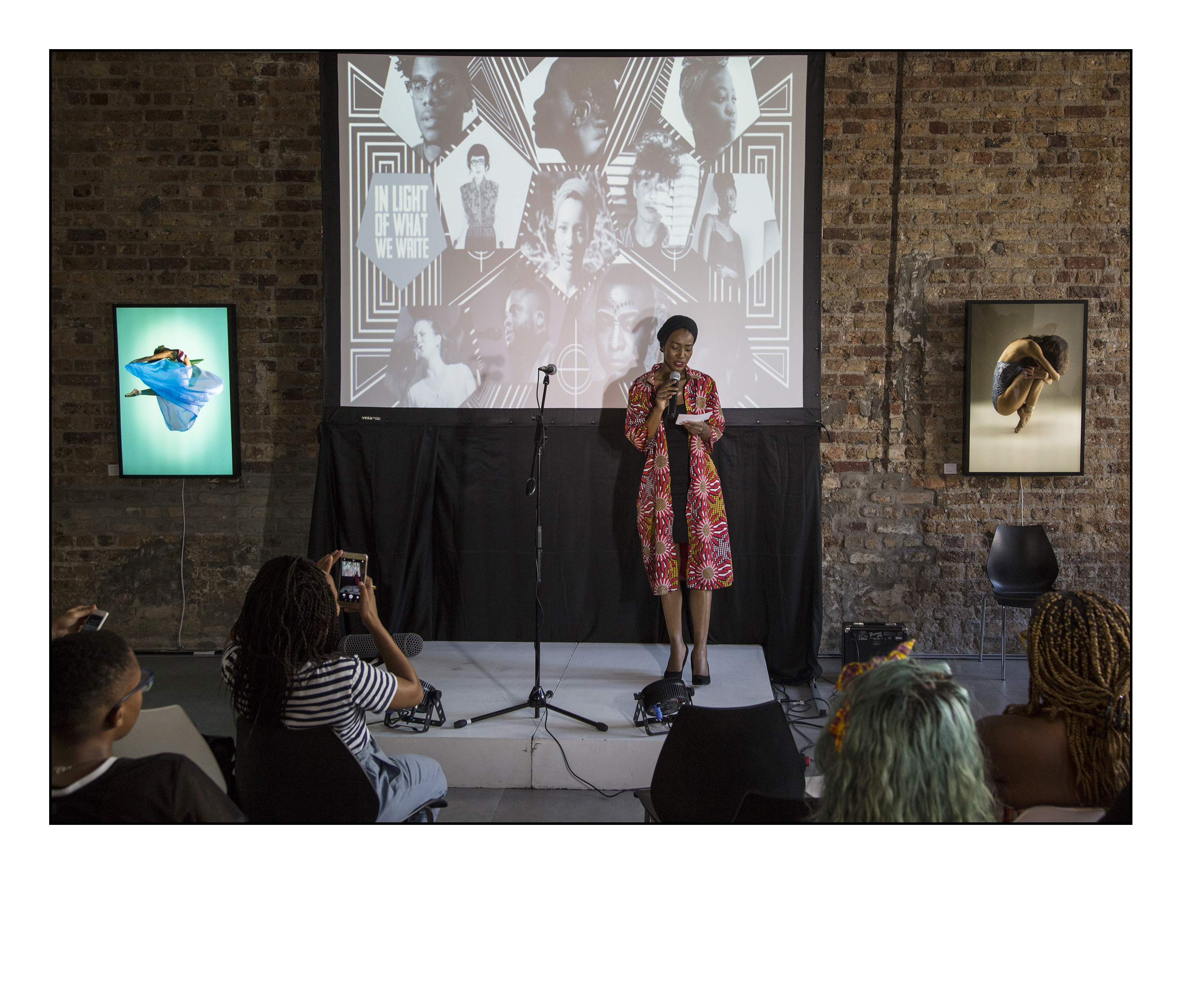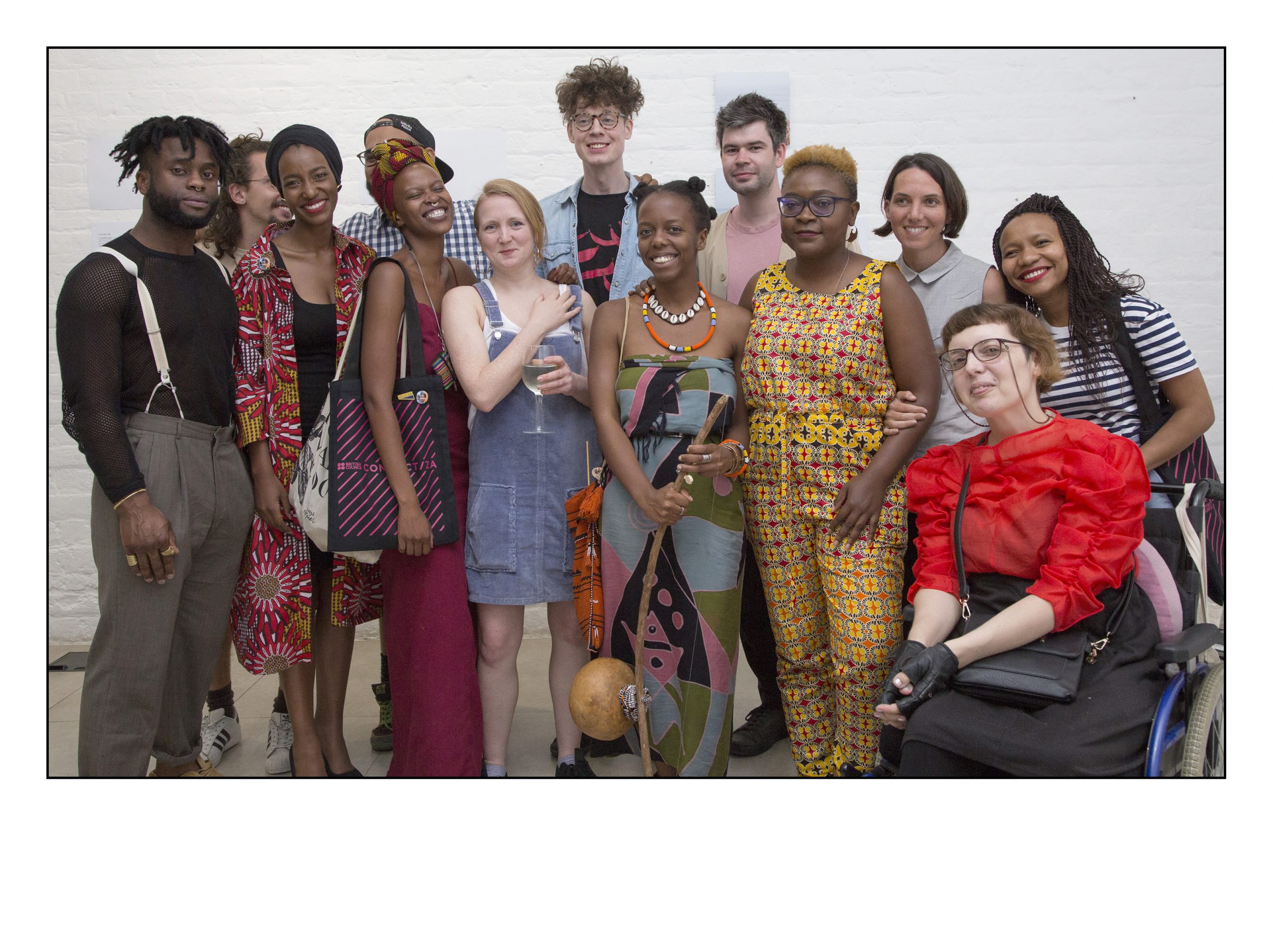Hosted at YoungBloodAfrica‘s Beatiful Life Building, one of Cape Town’s cultural and artist hubs, the literary event In Light of What We Write pushed the parameters of how engagement with literature can be framed and presented. With a clear understanding of who they were creating this event for – “urban 18-35 year old audience and arts professionals” – the event organisers were able to execute the idea by making it accessible both in terms of form and content.
Poet, writer and arts project manager Linda Kaoma along with poet and co-founder of literary collective Neu! Reekie! Michael Pedersen, in partnership with British Council Connect ZA, co-curated the event. It was a showcase for “unique, experimental and experiential content” with the aim of illustrating the “accessibility of literature.”
I interviewed Linda to find out more about the event and their aim for accessibility.
You curated this project with Michael Pederson. Could you please share more about the two of you?
Michael and I have a long history of being associated with projects that are disrupting the literary scene in one way or the other. He is the co-founder of Neu! Reekie!; a collective that dismantles the structures and snobberies dividing high and low art, amongst an endless list of endeavors. I’ve travelled the continent recording and archiving poets, as well as managing and curating events such as the Badilisha Poetry Pop Up Shop. So, when it came to working on this event we had a lot of synergy, and any differences in opinion were easily solved. Michael only arriving a few days before the event was less challenging than I anticipated, we had a series of Skype calls, wrote endless emails to each other and relied heavily on Facebook Messenger to have quick check-ins.
You chose writers and poets who are quite well-known in the SA and UK literary space. How did you decide who will be a part of this project?
The objective was to present the event through and incorporating multidisciplinary art form and multi-media. The first thing we did was sort out artists who were multi-disciplined, such as Lidudumalingani, who is both a writer and photographer. We also wanted to include people whose writing was explorative and cross-genre, like SindiswaBusuku-Mathese. Her book “Loud and Yellow Laughter” includes poetry, prose, diary entries, photographs, and I found this combination made her work accessible and easy to decipher and digest. We included Hollie McNish because not only is she a brilliant poet, she has a ton of video content that we could use as part of the event. Each artist we chose fit the scope and rhythm of ‘In Light of What We Write’.
The event was described as a “showcase unique, experimental and experiential content to illustrate the accessibility of literature”. Could you please unpack this for our readers?
We wanted to present literary work in ways that are somewhat rare in the literary scene, and we wanted a sensory-engaging and emotionally-challenging experience for the 18-35-year-old audience. We included a video featuring a poetic interview between Koleka Putuma and I; Koleka answered my question with only excerpts from her poems and from other people’s work. Kayus Bankole used his body in a dance piece in moving poetic ways. Genna Gardini’s poem “Nipple Hair” made us laugh hysterically, whereas my poem “#blackgirldepressed” was melancholic for some. We experimented with lights during some performance, we had musicians, we included Braille for some of the exhibited work, and we asked our audiences to participate at the #whatyouwrite station. We really pushed ourselves as far out the literary box as time and budget allowed us to for‘In Light of What We Write’.
The event was made up of an exhibition and performances. What was included in the exhibition?
The exhibition consisted of a variety of work. Lidudumalingani showcased his photography alongside excerpts from one of his short stories. I worked with a graphic designer and visual artist who visually interpreted my poems. Sindiswa Busuku-Mathese exhibited some work from her collection that was accompanied by Braille. John Bryden from Eyes of Other exhibited some of his photography. The exhibition also featured a variety of video instillations.
The other writers and performers who were part of the event included Allison-Claire Hoskins and Julie Nxadi from South Africa, and Hollie McNish from the UK.





